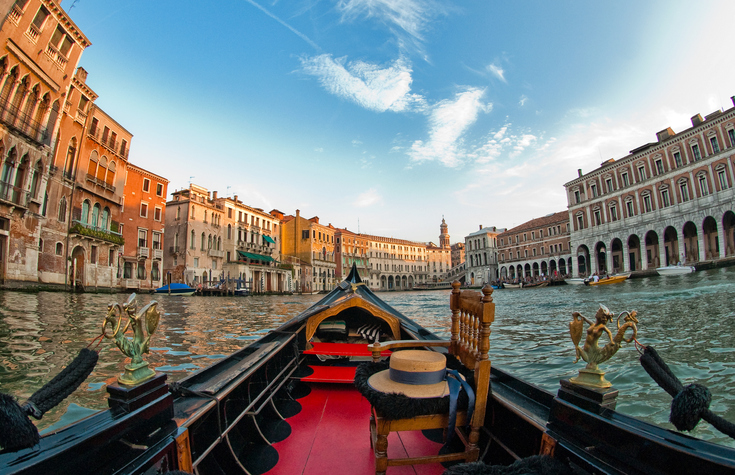Venice is unique. One of the planet’s absolute, non-negotiable, once-in-a-lifetime, must-see locations. Unfortunately, this bucket-list status means that the city on the water can be unbearably packed during peak tourist season. To escape the crowds, you have two options: either visit off-season, when Venice is quiet(er), or strike out to the city’s calmer corners and more unique attractions. Here are a few ideas to whet your appetite when it comes to lower key attractions.
Venice Lido
The Lido di Venezia is Venice’s elegant beach resort. This narrow strip of land is within easy reach of the main center by ferry and perfect for getting away from the crowds across the water. The Lido boasts award-winning beaches and spectacular views back towards Venice. It also offers beautiful sunset and is best known for hosting the Venice Film Festival, held in early September.
Scala del Bovolo
A stone’s throw from Piazza San Marco, this lavishly decorated late 15th-century spiral staircase is an architectural jewel that connects a series of loggias on the side of a palazzo concealed down a narrow alleyway. Admire and take photos from below or pay to climb up for a fantastic view across Venice’s terracotta rooftops..
Doge’s Palace Secret Itineraries
This guided tour will show you sections of the sprawling palace most visitors don’t get to see, such as the dank prison wells, narrow staircases, private offices, attic rooms, and torture chamber. Must be booked in advance.
Libreria Acqua Alta
Self-proclaimed as the “most beautiful bookstore in the world,” Acqua Alta, literally “high water,” is stuffed with shelves that groan under books, maps, magazines, and more. To protect its stock against regular flooding, books are stored in everything from bathtubs to, what else, a gondola!
Lazzaretto plague islands
The two Lazzaretto islands, Vecchio (Old) and Nuovo (New), were set up as sites of isolation for quarantining patients with contagious diseases. The aim was to preserve the health of the majority of Venice’s citizens on the main islands. Since 2004, more than 1,500 skeletons of plague victims buried between the 15th and 17th centuries have been dug up. Both islands now make fascinating, although eerie, places to visit.
Basilica of St Mark’s terrace
Rather than simply visiting the, admittedly stunning, interior of the basilica, splash out on a museum ticket that provides access to the church’s balcony. Look down on the busy square from above and examine the original bronze horses close up.
Torcello
A boat-ride away, Torcello is like a different world. Sparsely populated, this green island sits at the northern end of the Lagoon. A peaceful spot, it is home to some spectacular 7th-century Byzantine mosaics in the Cathedral of Santa Maria dell’Assunta.
Ponte delle Tette
Literally, the “Bridge of Tits,” this small bridge spans one of the city’s countless waterways in the San Cassiano district. It was once used by local prostitutes, who were encouraged to stand topless on the bridge to entice potential clients.
Fortuny
The name of this prestigious fabrics manufacturer is synonymous with Venetian style and craftsmanship. Located on Giudecca Island just across the Lagoon, its showroom and spectacular gardens are open to the public by appointment.
Squero di San Trovaso gondola yard
Gondolas are Venice’s most iconic symbol. A squero is a traditional boatyard, only three of which are still functional today. The yard in San Trovaso opened in the 17th century and now builds about ten new boats every year. Not open to the public, strictly speaking, but you can get a good view of the yard and the work that goes on from across the street.
Hopefully these ideas have reassured you that Venice doesn’t always have to be about following the crowds around the big draws. Of course, we’re not suggesting that you should miss St Mark’s, the Rialto Bridge, or the Accademia, but there’s no doubt that alternating them with the odd hidden gem will make your visit to La Serenissima more enjoyable.

